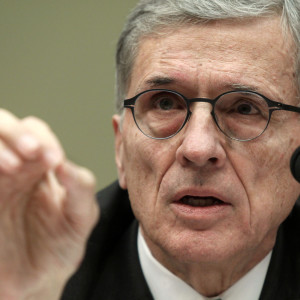Senior Federal Communications Officials on Tuesday announced the details of the agency’s plan to expand the Lifeline telephone subsidy program for low-income Americans to include fixed and mobile broadband Internet service.
On a conference call with reporters Tuesday, senior FCC officials said the agency will vote during its March 31 open meeting to expand Lifeline, also known as the “ObamaPhone” program, allowing low-income households eligible for the $9.25 monthly subsidy the option of applying it to mobile or fixed broadband Internet.
“The draft announced by Chairman Tom Wheeler and Commissioner Mignon Clyburn transforms the Lifeline program with a focus on broadband,” a senior FCC official told reporters. “That delivers new products and services to consumers including fixed and mobile standalone broadband, as well as fixed and mobile broadband and voice bundles.”
The FCC voted last June to develop new rules for the program, which previously applied only to mobile or landline telephone service. Under the new plan developed by Wheeler and Democratic Commissioner Clyburn, 13 million current lifeline subscribers can choose to apply their subsidy to telephone and/or broadband.
Some 40 million Americans currently fall within the income threshold to apply for the subsidy, with only 32 percent currently enrolled. The plan increases the Lifeline budget from $1.6 to $2.25 billion, which the FCC hopes will bring in another 5 million subscribers.
According to officials a major goal of the program is to bring in more providers beyond traditional telephone services, including cable companies like Comcast and Time Warner Cable, and incentivize them to offer low-cost bundled phone and Internet packages to subscriber households.
The plan also tackles years of evidence and criticism of fraud and abuse by both subscribers and providers by establishing a “National Eligibility Verifier” and a budget mechanism to reduce the cost to ratepayers, who pay for the program’s budget via fees included on their monthly telephone bills.
A neutral third party will act as the verifier and remove “the opportunity for providers to enroll ineligible subscribers” by paring down the list of federal programs used to determine eligibility to only those with electronic validation, including SNAP, SSI, Medicaid, Veterans Pension and Tribal. Applicants will also be verified via income eligibility.
Lifeline data will be “publicly available and understandable” under the new program, including the number of subscribers per provider and the disclosure of annual subscriber recertification data.
The FCC’s Wireline Competition Bureau must notify the the agency when Lifeline spending reaches 90 percent and determine the reasons for the growth in spending. Afterward the FCC has six months to take action.
Providers wishing to participate in the program will have to offer a minimum of 10 megabits-per-second download speeds, 1 Mbps and a 150 gigabytes monthly usage allowance for fixed. Mobile providers must offer 500 megabits at 3G, increasing to 2 gigabits-per-month by the end of 2018, unlimited minutes and support voice-only service until the end of 2019, after which they’ll have to offer broadband as part of any supported device.
The FCC will start winding down voice-only support to $7.25 in December 2017, $5.25 the following year and end after Dec. 1, 2019, to encourage broadband adoption.
The Lifeline program was enacted in 1985 to help low-income Americans get telephone service by providing them with a subsidy to help cover the cost. The program was expanded to include cell phone service in 2005, and grew exponentially in use and cost during the Great Recession. The Lifeline budget rose an average of more than 25 percent per year from $821 million in 2008 to $2.1 billion in 2012.
Part of the rise in cost came from widespread fraud and abuse across consumers and wireless providers. According to the FCC, 41 percent of the program’s more than six million subscribers in 2012 failed to provide eligibility documentation, with many subscribers enrolling multiple times with falsified information to obtain the free cellphone and $9.25 monthly subsidy. At the same time numerous wireless providers were found to be enrolling the same customers multiple times for profit.
The FCC implemented reforms in 2012, including a database to prevent duplicate enrollees and fining providers $96 million for negligence and fraud. The cost of the program came down to $1.6 billion in 2014. Lifeline is paid for by the FCC’s Universal Service Fund, made up in part by a “universal service fee” attached to Americans’ monthly phone bills — typically a few dollars based on a percentage of the total bill.
Republican FCC Commissioners Ajit Pai and Michel O’Rielly said during last year’s proposed rule-making vote they were against any reforms without a budget cap on the program and assurances in place to prevent fraud and abuse. All three Democratic commissioners are expected to support the plan.

